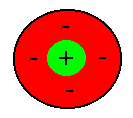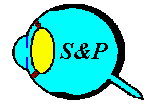

Receptive Fields Tutorial


Along with the concept of a receptive field comes the idea of what the receptive field is "seeing". By this I mean, what information is being processed by receiving information from a relatively large region of the sensory surface (retina, skin, etc) and what information is sent on the cells that receive input from that cell. One way to understand the function of a receptive field is to try to figure out what the "best stimulus" is, i.e., that stimulus that leads to the greatest stimulation of the cell.
| First, it is important to know that most cells
in the nervous system are not quiet in the absence of stimulation. Instead,
they fire at a relatively slow background rate (Figure 2). For example, in the present cell let us suppose that the firing rate is four times a second (thus, the above line shows one second of recording). A very simple way to think about receptive fields is that light that falls
in excitatory regions, those regions that increase the cells firing rate, are
positive and add to the total stimulation. |
 Figure 2. Firing of a cell in the absence of sensory stimulation. |
Question 1: Which of the following stimuli will lead
to the greatest firing rate (Click on that stimulus):

For the following questions we will use a center-surround receptive field such as one found in the retinal ganglion cells. The center is excitatory and the surround inhibitory. A white colored area represents the stimulus and the grey colored area (or the background color) represents the absence of a stimulus.
Figure 3. Examples of four different stimuli on a receptive field. Which is the best stimulus for this receptive field.
![]()
![]() Click
here to go to the next question.
Click
here to go to the next question.